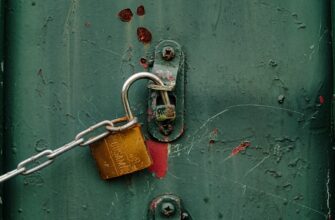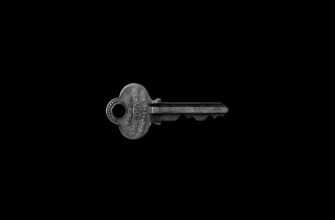Losing access to your cryptocurrency holdings due to a damaged, lost, or stolen Ledger hardware wallet is a nightmare scenario. Your recovery phrase (seed phrase) is the **only** key to restoring your funds. However, creating a backup introduces risks if it’s linked to your identity, potentially exposing you to theft, surveillance, or physical threats. This comprehensive guide details exactly how to backup your Ledger anonymously, step-by-step, ensuring maximum security and privacy for your digital assets.
## Why Backup Your Ledger Anonymously Matters
Backing up your Ledger’s 24-word recovery phrase is non-negotiable for crypto security. But why the emphasis on anonymity?
* **Preventing Targeted Theft:** If a backup is linked to you (e.g., stored in a cloud account with your name, or a safe deposit box under your ID), it becomes a target. Hackers or malicious actors specifically seeking *your* crypto could exploit this link.
* **Avoiding Surveillance:** Governments or corporations tracking crypto activity might gain access to backups tied to your identity, compromising financial privacy.
* **Mitigating Physical Threats:** In extreme cases, individuals could be coerced into revealing backups associated with their identity.
* **Preserving Fungibility:** Truly private cryptocurrency use relies on actions not being easily traceable back to an individual. An anonymous backup supports this principle.
An anonymous backup ensures that even if the physical backup is discovered, it cannot be easily connected to *you* or your specific crypto holdings, adding a critical layer of protection.
## Step-by-Step Guide: Backing Up Your Ledger Anonymously
Follow these steps meticulously. **Crucially, perform all writing and storage preparation OFFLINE and in PRIVATE.**
1. **Gather Anonymous Materials (Offline):** Before starting, acquire items with no connection to you. Purchase them with cash from different, unrelated stores if possible.
* **High-Quality Metal Backup Tool:** Use a Cryptosteel Capsule, Billfodl, or similar stainless steel device. *Avoid* paper or wood long-term. Buy this anonymously (cash, no loyalty cards).
* **Pen/Permanent Marker:** A simple ballpoint pen or industrial permanent marker. New, unused, bought with cash.
* **Private, Secure Location:** Choose a distraction-free, private room in your home with no cameras or observers. Disconnect the computer from the internet.
2. **Generate Your Recovery Phrase (On Your Ledger):** This happens during initial setup or a reset.
* Follow your Ledger device’s on-screen instructions carefully.
* **Critical:** Write down the words ONLY on the metal backup tool in this offline, private environment. **NEVER** type them on a computer, phone, or take a photo.
3. **Engrave/Write the Phrase Anonymously:**
* Using your anonymous pen/marker, carefully inscribe each word of the 24-word recovery phrase onto the metal plates/strips of your backup tool. Double and triple-check accuracy against the Ledger screen.
* **Order is Vital:** Ensure words are recorded in the exact sequence shown.
* **No Identifiers:** Do NOT write your name, the date, “Ledger,” or any other identifying mark on the backup tool or its container.
4. **Securely Store the Anonymous Backup:**
* Place the completed metal backup into any inconspicuous, durable container (a plain small metal box, PVC pipe cap – bought anonymously).
* Choose **multiple, geographically separate, anonymous locations.** Examples:
* Buried in a waterproof capsule on trusted, unassociated private land (not yours).
* Hidden within an anonymous storage unit paid for in cash with a pseudonym.
* Secured within the structure of a building (e.g., behind bricks, under floorboards) in a location not linked to you.
* **Never** store it in:
* Your primary residence safe (easily linked to you).
* A bank safe deposit box under your real name.
* Any cloud storage, email, password manager, or digital photo.
5. **Verify and Test (Safely):**
* **Verification:** Once stored, use your Ledger’s “Recovery Check” app (if available for your model) to verify the phrase *without* exposing it digitally. Follow Ledger’s official instructions.
* **Testing (Advanced & Risky):** Only consider this if absolutely necessary and with extreme caution. Reset a *new* Ledger device (or the same one if you have a second backup confirmed elsewhere) and attempt recovery using ONLY your anonymous backup. **This involves temporarily accessing the phrase, so do it offline, privately, and destroy any temporary notes immediately after.**
## Best Practices for Long-Term Anonymous Ledger Backup Security
Maintaining anonymity and security is an ongoing process:
* **Durability is Key:** Metal backups withstand fire, water, and time far better than paper. Invest in quality.
* **Location Secrecy:** Tell absolutely no one about the backup locations, not even trusted family, unless absolutely necessary (consider a secure secret sharing method like Shamir’s Backup if sharing *is* essential).
* **Zero Digital Trail:** Never, under any circumstances, digitize your seed phrase. No photos, scans, cloud notes, texts, or email drafts.
* **Regular Checks (Discreetly):** Periodically (e.g., yearly), discreetly visit your storage locations to ensure they are intact and undisturbed. Do this without drawing attention.
* **Beware of “Secure” Digital Options:** Avoid password managers or encrypted notes apps – they are still digital and potentially hackable or subject to subpoenas.
* **Pseudonyms & Cash:** Use cash and pseudonyms for any transactions related to backup materials or storage rentals.
* **Physical Security:** If storing on property, ensure it’s well-hidden and protected from accidental discovery (e.g., during renovations).
## Frequently Asked Questions (FAQ) on Anonymous Ledger Backups
**Q1: Isn’t a safe deposit box under my name secure enough? Why anonymous?**
A: Safe deposit boxes offer physical security but are directly linked to your identity through bank records. They can be accessed by authorities with a court order, or the bank itself could be compromised. Anonymity removes this link, protecting you from targeted searches or institutional failures.
**Q2: Can I take a photo of my seed phrase and encrypt it or store it offline on a USB?**
A: **Absolutely NOT.** Digitizing your seed phrase in any form (photo, encrypted file, USB, text file) creates a catastrophic risk. Digital files can be hacked, malware can steal them, devices fail, and encryption can be broken or passwords forgotten/lost. The only truly secure method is an offline, physical, anonymous metal backup.
**Q3: What if I need to recover my wallet years later and forget where I hid the backup?**
A: This is a significant risk of extreme anonymity. Mitigate it by:
* Creating cryptic, non-identifying reminders only you understand (e.g., “Remember Grandpa’s fishing spot near the oak”).
* Using a secure secret sharing scheme (like Shamir’s Backup) split among very trusted individuals, instructing them only to combine shares under specific, dire circumstances, without revealing the location.
* Weighing the risk of forgetting against the risk of targeted theft. Balance is key.
**Q4: Is it safe to store multiple copies for redundancy?**
A: Redundancy is good practice (e.g., 2-3 copies), but **each copy must be stored anonymously and securely following the same principles**. More copies increase the potential points of failure or discovery, so manage this carefully. Never store them in the same type of location (e.g., don’t bury both in your backyard).
**Q5: Doesn’t Ledger Recover solve this backup problem?**
A: Ledger Recover (an optional subscription service) encrypts and shards your seed phrase, storing it with third parties. While convenient, it fundamentally breaks anonymity and self-custody. Your encrypted shards are stored by identified companies, creating a digital trail and trusted third-party risk. For true anonymity and self-sovereignty, manual, anonymous physical backup remains superior.
Backing up your Ledger anonymously requires diligence and a commitment to operational security (OpSec), but it’s the gold standard for protecting significant cryptocurrency holdings from both digital hacks and real-world threats. By meticulously following these steps—preparing offline with anonymous materials, engraving carefully, storing in unlinked locations, and maintaining strict secrecy—you create a robust safety net that keeps your recovery phrase secure and utterly disconnected from your identity. Your crypto’s security ultimately rests in your hands; guard your keys anonymously and wisely.








